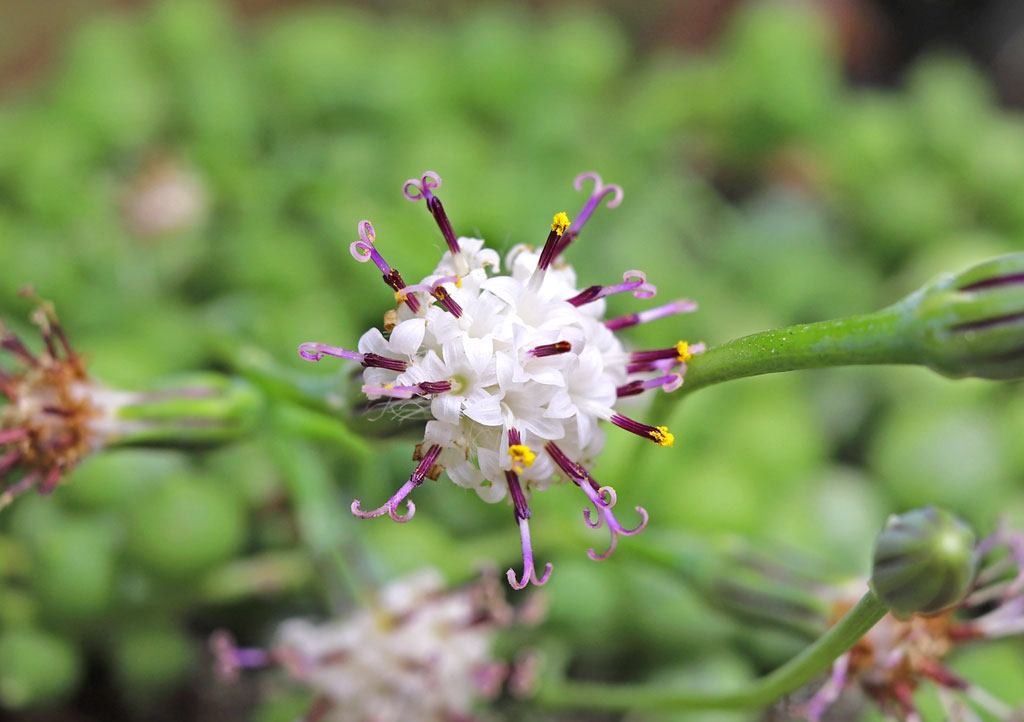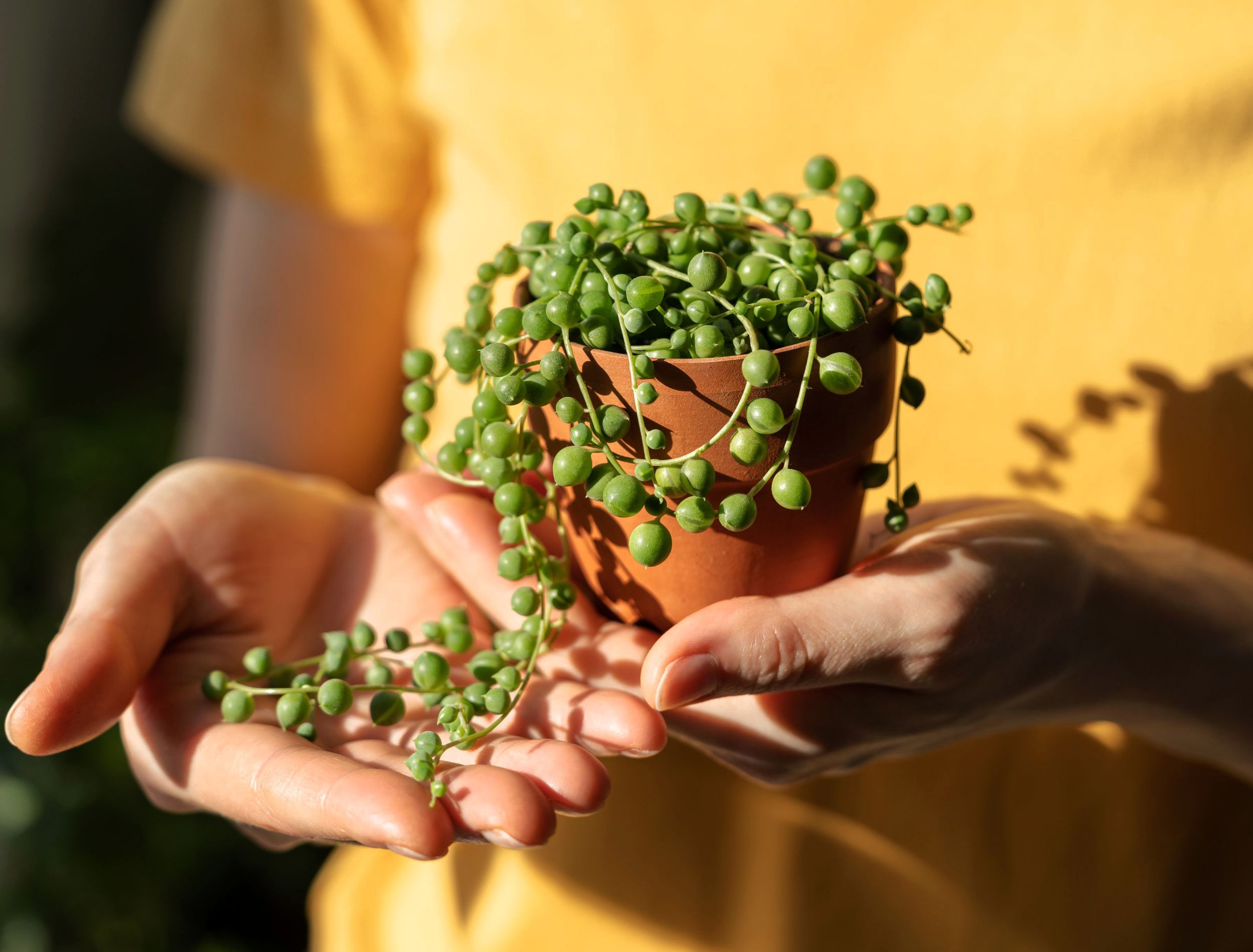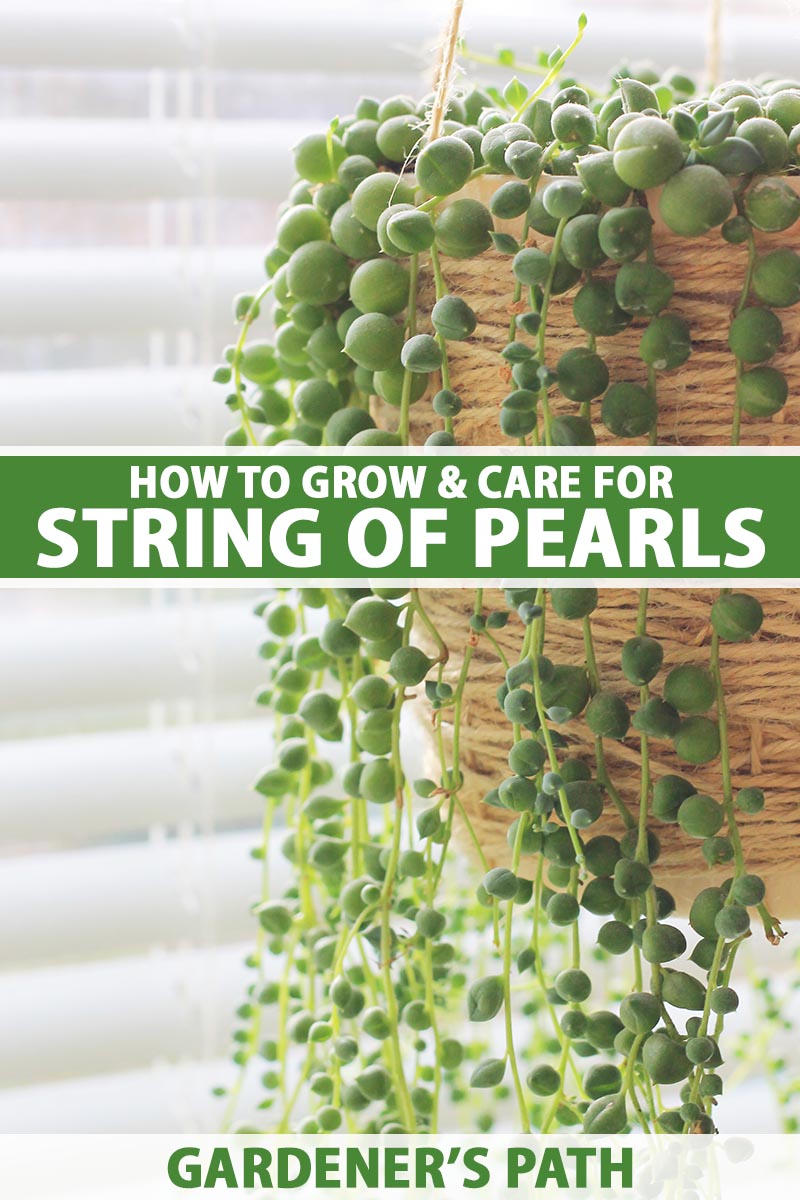Understanding the Lighting Needs of String of Pearls
When it comes to caring for String of Pearls succulents, one of the most critical factors to consider is lighting. These plants have adapted to thrive in environments with specific light conditions, and understanding their needs is essential to providing the best care. The question of how much sun do String of Pearls need is a common one, and the answer can vary depending on the environment and the plant’s specific requirements.
In general, String of Pearls succulents prefer bright, indirect light. They can tolerate some direct sunlight, but too much can be detrimental to their health. In fact, excessive sunlight can cause leaf scorch, discoloration, and increased risk of pests and diseases. On the other hand, insufficient sunlight can lead to weak and leggy growth, reduced flowering, and increased susceptibility to pests and diseases.
To determine the right amount of sun for your String of Pearls, it’s essential to assess the lighting conditions in your home or outdoor space. Consider the direction of your windows, the time of day, and the intensity of the sunlight. South-facing windows receive the most direct sunlight, while east- and west-facing windows receive more gentle, indirect light. Outdoor spaces with partial shade or dappled sunlight can also provide the perfect conditions for String of Pearls.
By understanding the lighting needs of String of Pearls, you can provide the best possible care for your plants. Whether you’re a seasoned succulent enthusiast or just starting out, knowing how much sun your String of Pearls need can make all the difference in their health and well-being. In the following sections, we’ll delve deeper into the specifics of providing the perfect amount of sunlight for your String of Pearls, including tips on how to assess lighting conditions, prevent overexposure, and supplement natural light with grow lights or other solutions.
How to Provide the Perfect Amount of Sunlight for Your String of Pearls
To determine the ideal amount of sunlight for your String of Pearls, it’s essential to assess the lighting conditions in your home or outdoor space. Start by observing the direction of your windows and the time of day. South-facing windows receive the most direct sunlight, while east- and west-facing windows receive more gentle, indirect light.
When it comes to indoor lighting, consider the following factors:
- Distance from the window: String of Pearls placed closer to the window will receive more direct sunlight, while those placed farther away will receive more indirect light.
- Window size and orientation: Larger windows and those with a southern exposure will provide more sunlight than smaller windows or those with a northern exposure.
- Time of day: String of Pearls will receive more sunlight during the morning and afternoon hours when the sun is highest in the sky.
Outdoor spaces with partial shade or dappled sunlight can also provide the perfect conditions for String of Pearls. Consider using shade cloth or other shading methods to filter the sunlight and prevent overexposure.
When determining how much sun do String of Pearls need, it’s also essential to consider the specific needs of your plant. Some String of Pearls may require more sunlight than others, depending on their age, size, and health. By observing your plant’s responses to light and adjusting its placement accordingly, you can ensure it receives the optimal amount of sunlight.
In addition to natural light, you can also supplement your String of Pearls with grow lights or other artificial lighting sources. This can be especially useful during the winter months when natural light is scarce or for plants that require more intense lighting. However, be cautious not to overdo it, as excessive artificial light can be detrimental to your plant’s health.
The Dangers of Overexposure: What Happens When String of Pearls Get Too Much Sun
While String of Pearls succulents require sunlight to thrive, too much sun can be detrimental to their health. Overexposure to direct sunlight can cause a range of negative effects, including leaf scorch, discoloration, and increased risk of pests and diseases.
Leaf scorch is a common problem when String of Pearls are exposed to too much direct sunlight. This can cause the leaves to become discolored, develop brown tips, and eventually drop off. Discoloration can also occur, causing the leaves to become bleached or develop unsightly brown spots.
In addition to these aesthetic problems, overexposure to sunlight can also increase the risk of pests and diseases. When String of Pearls are stressed by too much sun, they become more susceptible to infestations by pests like mealybugs, spider mites, and scale. They may also be more prone to diseases like root rot, leaf spot, and powdery mildew.
So, how much sun do String of Pearls need to avoid these problems? The answer is, it depends on the specific conditions of your plant. In general, it’s best to provide String of Pearls with bright, indirect sunlight, especially during the hottest part of the day. If you’re unsure whether your plant is getting too much sun, look for signs of overexposure, such as leaf scorch or discoloration.
To prevent overexposure, you can take a few simple steps. First, make sure to provide your String of Pearls with some shade, especially during the hottest part of the day. You can use sheer curtains or other filters to diffuse the sunlight and prevent scorching. Second, avoid placing your String of Pearls in south-facing windows, which receive the most direct sunlight. Instead, opt for east- or west-facing windows, which provide more gentle, indirect light.
By taking these precautions, you can help ensure your String of Pearls receive the right amount of sunlight and avoid the dangers of overexposure.
Conversely, What Happens When String of Pearls Don’t Get Enough Sun
While too much sun can be detrimental to String of Pearls, too little sun can also have negative effects. Insufficient sunlight can cause weak and leggy growth, reduced flowering, and increased susceptibility to pests and diseases.
When String of Pearls don’t receive enough sunlight, they may become stretched out and leggy, as they try to reach for the limited light. This can make the plant look unhealthy and unattractive. Additionally, reduced sunlight can cause the plant to produce fewer flowers, or no flowers at all.
Furthermore, String of Pearls that don’t receive enough sunlight may be more susceptible to pests and diseases. When plants are stressed by lack of light, they become more vulnerable to infestations by pests like mealybugs, spider mites, and scale. They may also be more prone to diseases like root rot, leaf spot, and powdery mildew.
So, how can you supplement natural light for your String of Pearls? One option is to use grow lights, which can provide the necessary light spectrum and intensity for healthy growth. You can also move your String of Pearls to a brighter location, such as a south-facing window or a sunroom.
Another option is to use mirrors or reflective surfaces to bounce light onto your String of Pearls. This can help to increase the amount of light the plant receives, without having to move it to a brighter location.
When determining how much sun do String of Pearls need, it’s essential to consider the specific needs of your plant. Some String of Pearls may require more sunlight than others, depending on their age, size, and health. By observing your plant’s responses to light and adjusting its placement accordingly, you can ensure it receives the optimal amount of sunlight.
By providing your String of Pearls with the right amount of sunlight, you can help to promote healthy growth, prevent pests and diseases, and encourage flowering. Remember to monitor your plant’s responses to light and adjust its placement as needed to ensure it receives the optimal amount of sunlight.
String of Pearls and Direct Sunlight: Can They Thrive Together?
Direct sunlight can be beneficial for String of Pearls, but it can also be detrimental if not managed properly. When considering how much sun do String of Pearls need, it’s essential to examine the relationship between these plants and direct sunlight.
On the one hand, direct sunlight can provide the necessary light intensity for String of Pearls to photosynthesize and grow. This can lead to healthy and robust plants with vibrant colors. However, direct sunlight can also cause leaf scorch, discoloration, and increased risk of pests and diseases.
To mitigate the risks associated with direct sunlight, it’s recommended to use sheer curtains or other filters to diffuse the light. This can help to reduce the intensity of the sunlight and prevent scorching. Additionally, you can also use shade cloth or other shading methods to provide partial shade for your String of Pearls.
Another option is to use a south-facing window with a sheer curtain or shade to filter the direct sunlight. This can provide the necessary light intensity for your String of Pearls while minimizing the risks associated with direct sunlight.
When using direct sunlight for your String of Pearls, it’s essential to monitor their responses to light and adjust their placement accordingly. If you notice any signs of scorching or discoloration, it’s best to provide partial shade or adjust the lighting conditions.
By understanding the relationship between String of Pearls and direct sunlight, you can provide the optimal lighting conditions for your plants to thrive. Remember to always monitor their responses to light and adjust their placement accordingly to ensure they receive the right amount of sunlight.
In the next section, we’ll explore the pros and cons of placing String of Pearls in east- versus west-facing windows, including the impact on temperature, humidity, and light intensity.
East- vs. West-Facing Windows: Which is Better for String of Pearls?
When it comes to providing the right amount of sun for String of Pearls, the orientation of your windows can play a significant role. East- and west-facing windows are popular choices for succulent enthusiasts, but which one is better suited for these plants? To determine the best option, let’s explore the pros and cons of each.
East-facing windows receive gentle, indirect sunlight during the morning hours, which can be beneficial for String of Pearls. This type of light is less intense than direct sunlight, reducing the risk of leaf scorch and discoloration. Additionally, east-facing windows tend to be cooler than west-facing windows, which can help prevent overheating. However, the amount of sunlight received from an east-facing window may not be sufficient for String of Pearls during the winter months or in regions with limited sunlight.
West-facing windows, on the other hand, receive direct sunlight during the afternoon hours, which can be beneficial for String of Pearls that require more intense light. This type of light can promote healthy growth and flowering, but it also increases the risk of leaf scorch and discoloration. West-facing windows tend to be warmer than east-facing windows, which can be beneficial for String of Pearls during the cooler months. However, this increased heat can also lead to overheating and water loss.
So, which is better for String of Pearls? The answer depends on your specific climate and the time of year. If you live in a region with mild winters and hot summers, an east-facing window may be the better choice. This will provide your String of Pearls with gentle, indirect sunlight during the morning hours and protect them from the intense afternoon sun. However, if you live in a region with cool winters and mild summers, a west-facing window may be the better choice. This will provide your String of Pearls with more intense sunlight during the afternoon hours and help promote healthy growth.
Ultimately, the key to determining how much sun your String of Pearls need is to observe their response to light. If you notice that your plants are becoming leggy or discolored, it may be a sign that they are not receiving the right amount of sunlight. By adjusting the placement of your String of Pearls and using sheer curtains or other filters to diffuse direct sunlight, you can provide them with the optimal amount of sun for healthy growth and flowering.
Outdoor String of Pearls Care: How to Provide the Right Amount of Sun
When it comes to outdoor String of Pearls care, providing the right amount of sun is crucial for healthy growth and flowering. However, outdoor conditions can be unpredictable, and it’s essential to take steps to protect your plants from extreme temperatures, intense sunlight, and other environmental factors. Here are some tips on how to care for your String of Pearls outdoors and provide them with the right amount of sun.
Choosing the right location is critical when it comes to outdoor String of Pearls care. Ideally, you want to place your plants in a location that receives bright, indirect sunlight for most of the day. A spot that receives morning sun and dappled afternoon shade is perfect for String of Pearls. Avoid placing your plants in areas that receive direct sunlight for extended periods, as this can cause leaf scorch and discoloration.
Shade cloth or other shading methods can be used to filter intense sunlight and provide your String of Pearls with the right amount of sun. You can also use umbrellas or canopies to create a shaded area for your plants. When using shade cloth, make sure to choose a breathable material that allows for airflow and won’t trap heat.
Protecting your String of Pearls from extreme temperatures is also essential for outdoor care. Avoid placing your plants in areas that are prone to frost or extreme heat. If you live in an area with cold winters, bring your String of Pearls indoors during the winter months or use a frost blanket to protect them from frost damage.
Another important aspect of outdoor String of Pearls care is soil temperature. String of Pearls prefer well-draining soil that is warm to the touch. Avoid planting your String of Pearls in areas with cold soil, as this can cause root rot and other problems. You can use mulch or other soil warmers to keep the soil temperature consistent.
Finally, make sure to monitor your String of Pearls regularly and adjust their care as needed. Check the soil moisture, temperature, and light intensity regularly, and make adjustments to ensure your plants are receiving the right amount of sun. By following these tips, you can provide your String of Pearls with the right amount of sun and enjoy healthy, thriving plants outdoors.
Remember, understanding how much sun do string of pearls need is crucial for their care. By providing the right amount of sun, you can promote healthy growth, flowering, and prevent common problems associated with too little or too much sunlight. With the right care and attention, your String of Pearls can thrive outdoors and provide you with beautiful, trailing stems and delicate white flowers.
Monitoring and Adjusting: How to Ensure Your String of Pearls Get the Right Amount of Sun
Providing the right amount of sun for String of Pearls is an ongoing process that requires regular monitoring and adjustment. As the seasons change and the lighting conditions in your home or outdoor space shift, it’s essential to observe your plants’ responses to light and make adjustments as needed.
One of the most critical aspects of monitoring your String of Pearls is observing their leaf color and texture. If the leaves are becoming scorched or discolored, it may be a sign that they are receiving too much direct sunlight. On the other hand, if the leaves are becoming pale or stretched, it may indicate that they are not receiving enough light.
Another important factor to monitor is the temperature of the environment. String of Pearls prefer temperatures between 65-75°F (18-24°C), and extreme temperatures can cause stress to the plant. If you notice that the temperature is fluctuating significantly, consider moving your String of Pearls to a more stable location or using a thermometer to monitor the temperature.
In addition to monitoring the temperature and leaf color, it’s also essential to observe the overall health and growth of your String of Pearls. If you notice that the plant is becoming leggy or weak, it may be a sign that it’s not receiving enough light. On the other hand, if the plant is becoming too dense or compact, it may indicate that it’s receiving too much light.
To make adjustments to the lighting conditions, consider using sheer curtains or other filters to diffuse direct sunlight. You can also move your String of Pearls to a different location or adjust the angle of the plant to optimize the amount of light it receives.
Understanding how much sun do string of pearls need is crucial for their care, and ongoing monitoring and adjustment are essential to ensure they receive the optimal amount of sunlight. By observing your plants’ responses to light and making adjustments as needed, you can promote healthy growth, flowering, and prevent common problems associated with too little or too much sunlight.
Remember, every String of Pearls is unique, and what works for one plant may not work for another. By monitoring and adjusting the lighting conditions regularly, you can tailor your care to the specific needs of your plant and ensure it thrives in its environment.








